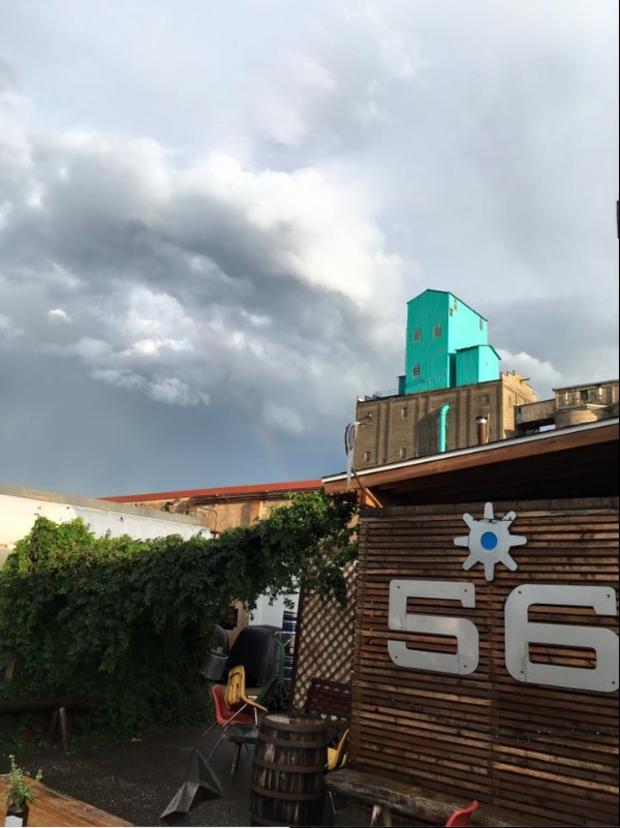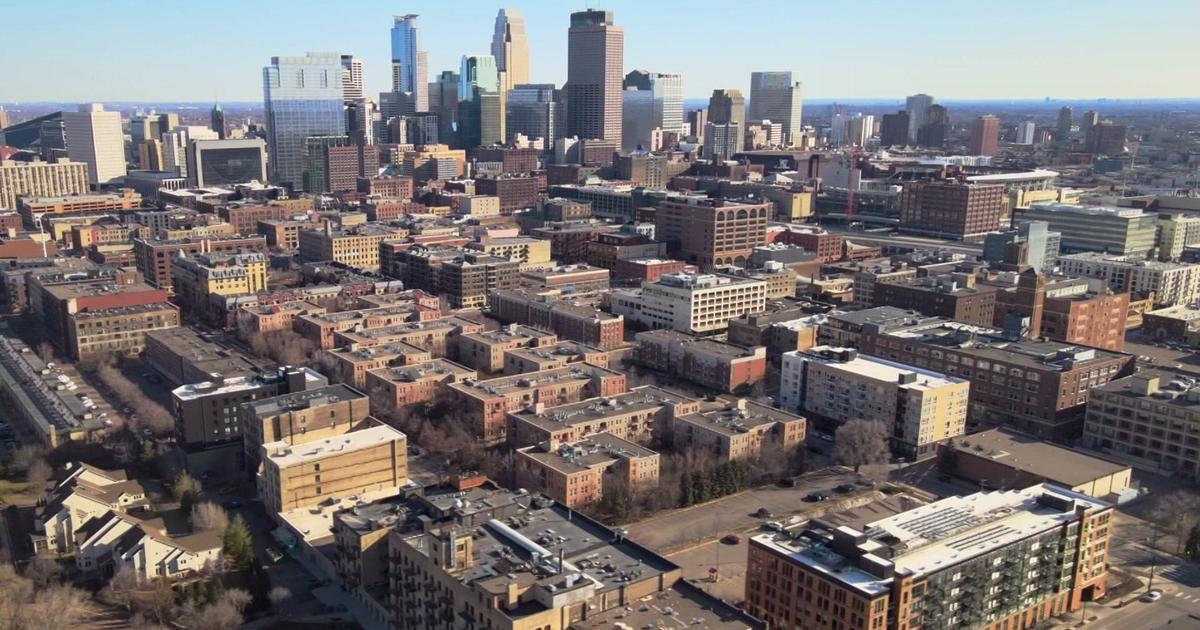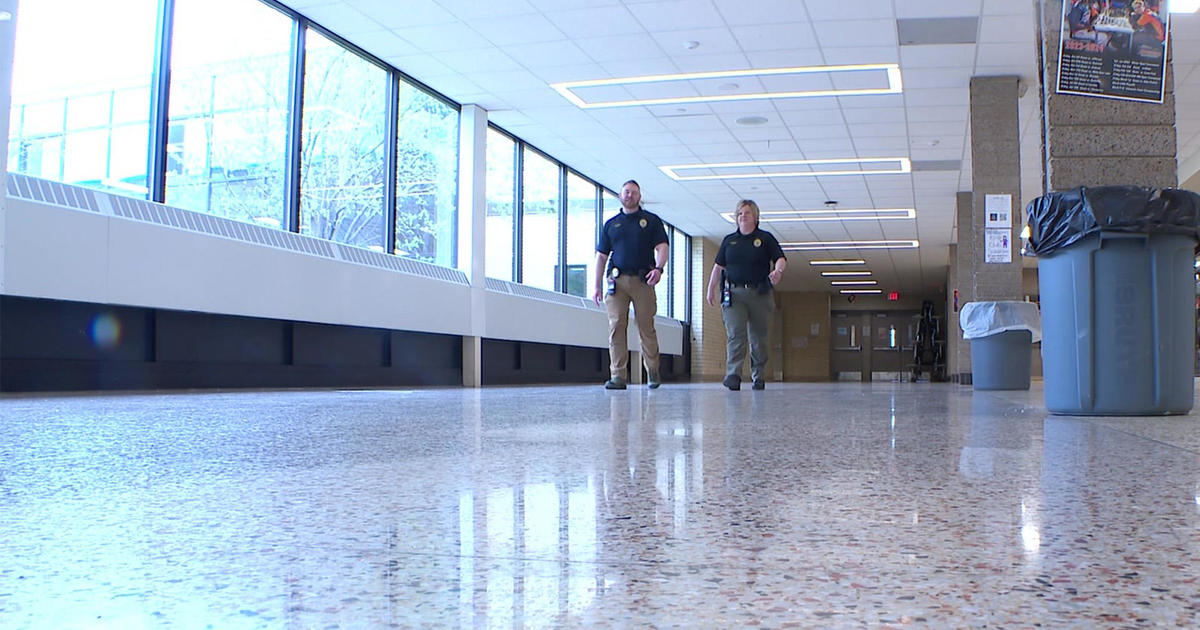Tap Talk: Twin Cities' Biking Brewers – 56 Brewing
Over the last five years, the craft brewery movement has grown exponentially in Minnesota. The Associated Press says licensing records show two-thirds of Minnesota breweries have opened just since 2010. So, we decided to help you – and your livers – keep up with the taproom trend by stopping by some of these Twin Cities brewhouses. For the next brewery, Tap Talk is going back to a Northeast brewery that will soon be getting a new home – 56 Brewing.
For many brewers, the art of brewing is about history.
Yes, the craft includes an element of science and a creative mind, but the practice of brewing a beer is steeped in history. In fact, part of the excitement around the Twin Cities' craft beer boom is rebuilding a history that was all-but washed away from the country during prohibition.
While all new breweries are doing their part to help rebuild what was lost, one brewer is starting a Northeast tradition at 3134 California Street.
"I was Northgate's last customer to buy a growler at the space we're at now. Which is kind of ironic," owner and director of operations of 56 Brewing Kale Johnson said. "I ended up buying all of the equipment and then leasing the whole space."
Johnson and his partners, Kerry Johnson and Nick Chute, took possession of Northgate Brewing's old property, along California Avenue, at the end of 2014 and received their licensing in May 2015.
They decided to run their brewery as Northgate had – without a taproom, and focused on distribution.
Only open two days a week, 56 Brewing offered samples and sold growlers. To those in the neighborhood, they even delivered via bike.
"It was worthwhile for us because we could get our branding out there, we could get our marketing, we could start getting our name recognition [and all] for really not too much capital investment," Johnson said.
The brewery started off small, with just four flagship beers, but soon grew to include two additional flagships and several other limited additions.
Now, 56 Brewing is beginning a transition into a brand new space that will include a taproom.
But as they located and secured a new location, also in Northeast, another up-and-coming brewery approached them about leasing the garden spot and equipment.
So, the tradition of brewing continues at 3134 California and the culture continues to grow within the Twin Cities.
Follow them: on Twitter at @56Brewing, on Facebook at 56 Brewing, or visit their website online.
Owners: Kale Johnson, Kerry Johnson, Nick Chute
Brewer: Nick Chute
Location: 3134 California St. NE, Suite #122
Hours: Sunday – Thursday: Closed, Friday: 5 – 8:30 p.m. and Saturday 12 – 8:30 p.m.
Contact: 612-404-0056
Congratulations on the expansion! I'm sure the process has been very exhilarating. Before we talk about the new space, let's start off with an easy question – how did you come up with the name 56 Brewing?
Johnson: That's probably the No. 1 question we get. I'm a math/science guy, so I see that number everywhere. Whether it's 5.6 percent ABV or 56 SRM as it relates to beer, whether it's numbers – 7X8, 14X4, 28X2 – I mean I see that number everywhere. It's kind of been my number since before I can remember. So, as we were coming up with names for the brewery and trying to be unique we thought, "What is wrong with just calling it a number?" We have traced that number back and we actually have something in the brewery that has a "56" cast into it. It's a paddle boat that my dad made. There's crank arms in this paddle boat and all cast parts have a number. Of course the number is 56. So, I'm like that's got to be where it came from, where it stuck in my head. We grabbed it from my dad's shed and we hung it up in the brewery. It's just kind of fun.
That is fun! And certainly very unique. You don't hear of many breweries named after a number. So, tell me a bit about the new space, will it still be located in Northeast?
Johnson: Yes, absolutely. Part of our whole vision, and part of the company, is we love Northeast. So, we're still staying in the northwest part of Northeast. [The new space] will have a full taproom, event space and an open view. So, there will be full production there but with an open layout.
Sounds like it will be very spacious! Tell me, one of the things that set 56 Brewing apart was the bike delivery. How did that get started and is this something you will continue?
Johnson: We definitely will have it as an option, yes. We love biking. That's part of what we do anyways. [As stated, we started off limited with just off-sale.] So, we had to be creative and say how do we continue to service our community and our neighborhood? What are unique ways we can do that? We knew that Duluth did this for a while, but nobody in Minneapolis had really been doing this. So, we said it doesn't really make sense for us to be open Sunday just for a few people to come in, but what we can do is we can offer an online service. [Customers] can figure out what beer they want, put in on order online, which makes it legal, and then we'd literally have our bikes and our backpacks, or burly trailers, and we'd bike wherever was in 55418 area code.
Were there additional rules or laws for, what was essentially, an alcohol delivery service?
Johnson: Yeah, there certainly was. We can't go out and just have our car, or our truck, full of beer and just sell it. We have to have orders taken, either physically in shop or online. Once orders are taken we can figure out a pickup schedule. We actually have to check IDs and we have people sign for what they received to verify that, yes they did receive it and we did check their ID. So, yeah there is still definitely some legal concerns and some licensing.
Sounds like a great option for consumers who can't make it in to the brewery! So, now that we've talked about one way customers can get their beer, let's talk about the beer itself. What beers will you be offering at the new space?
Johnson: We currently have six (flagship beers), but we also have specialties that we've been making. What we're going to do is we're going to continue to expand that line up. So, we're going to have 20 available taps. We'll have enough beers to do a variety of unique styles that rotate through. What we really want to focus on is the quality of beer, the consistency of it and just creating a good balance in beer. So, [the new space] will really allow us to be creative and be able to jump into all those recipes that we just can't do at our current space.
I've noticed that you have an array of interesting flavors already. For example, a rye lager is one that I haven't seen many places. How did you come up with that flavor?
Johnson: Nick and I both have combined brewing experience of about 15 years. This was one of his recipes that he's tried and figured out for years. So, it was a recipe that he came up with, he brewed it, we tried it. We said we want to do a lager for sure. Everybody can do an ale, there's lots of ales out there, but lager is something we definitely want to pursue. So, to just have that 10 – 12 percent rye [added to the lager] gave a uniqueness. We love the texture and the flavor of it. It was just unique enough that we said it's got to be one of our staples. Honestly, we had a lot of people provide great feedback on it. So we just kept it on.
It definitely caught my eye! I can see why it would be one to keep on the taps if only for that. The other thing that caught my eye was that you didn't start out with an IPA as a flagship.
Johnson: Exactly. It was on purpose. It's probably pretty rare for a brewery to come out with flagship beers and have no IPA. We understand that the marketplace [wants IPAs] and if they don't know anything they'll say, "I'll just take your IPA." But we said, "Listen, we can actually make some very good quality beers and not do an IPA." So, we said we're intentionally not going to do that because we want to really showcase and help people understand that there is good beer out there without just going to really hoppy [flavor.] We did an IPA [eventually]. I call it a cousin to the IPA. So no, we didn't come out with it at first, but then certainly we had to do it. We were thinking about it, and people kept asking, inevitably, "Where's your IPA? Where's your IPA?" So again, what we came out with for an IPA is very different from any other IPA out there. It's a very tropical IPA, still has that bitterness but it has that nice sweetness and tropical nose to it.
I can understand why you would need to eventually add an IPA to the menu, but it's interesting that you went about it with a very different approach. So, I know the new space isn't open yet, but can you share any of the new flavors that will be on tap?
Johnson: Certainly we're going to have everything we have here on tap. We have a couple more specialties that we're creating now. There will be some barrel-aged products that will be coming out. We've acquired four new barrels that we're going to be aging product in. We also have some barrel-aged product that has never been released yet that we're going to release when we open. [We're heavily pushing] the darker beers, because our goal is [to open on] the 56th day of the year, so February 25. We [also] love doing different adjuncts. We've played around with it a little bit here. We've taken a rye lager and added grapefruit. So, certainly as we expand we'll be able to do more of those fruit infusions into our products. One thing you can look for is a cold press IPA blend. We were selected to be one of the breweries to open at the new Minneapolis airport. The Stone Arch Craft Beer Bar. So, that also will be coming certainly in our new space as well.
Chute: It's a flavor combination that sounds a little different when you first hear it because most people think if you're going to add coffee to a beer add it to a stout or a porter, but the hop aroma and the coffee aroma blend together really well. It's a very pleasing aroma. And the flavor of the coffee is not over powering of the beer itself so it really turns into a drinkable beer.
That does sound like a very intriguing flavor! Let's talk about some of the beers customers will recognize. Of your flagships, which is the most popular?
Johnson: Probably the Northeast Nectar. The Lake Sandy Rye that we talked about earlier is also very popular, and our IPA, of course. Then our dark chocolate coconut stout. Those four are continually the top sellers. They kind of bounce around from being the top ones depending on the time of year and the weather.
Chute: The Northeast Nectar and the California Street IPA are the ones I'm making the most of. In terms of quantity, those two by far sell the most.
Interesting that the two beers at the opposite ends of the flavor spectrum tend to be your best selling! Tell me, what would you serve to someone who is new to craft beer?
Chute: Probably the Northeast Nectar. I think one of the reasons that beer sells so well is that it's very drinkable. It's low in bitterness; it's got a little bit of a sweet note to it. So, a lot of people who are not big into drinking craft beer, that's an easy one for their palate to enjoy.
How about someone who is very knowledgeable in craft beer? What would you serve them?
Johnson: I would say for sure our California Street IPA. It's unique enough to balance out the flavors for someone who understands what an IPA is and it's different enough that they can say, "OK, I get it. I can understand the balance between the El Dorado, the cascade and the tropical notes." Then also, I would say probably either our porter or our stout. Both very solid beers. There's a lot of complexity in both of those.
Both of those sound really delicious! I'm very interested to see how this IPA differs from the traditional IPA. So, it's clear in talking to you both that there is a passion for beer. Tell me, what is your favorite thing about beer?
Johnson: Well, for me, it's more of a scientific piece of it. My background is engineering physics, so I love the physics and science of it. I love creating something that's great.
Chute: Every homebrewer has that fantasy of opening a brewery one day. So, it was always something in the back of my head. For me, you have basically four ingredients: water, barely, yeast and hops. And form those four ingredients you can make so many different styles and flavors. That's the thing that has always been the most fascinating to me – just how much variety you can get out of four ingredients. The fun of making new recipes and trying to get those flavors to balance and be something that is drinkable and people crave, that's the most exciting part about it to me.
Johnson: It's not that we just wanted to make larger quantity of beer because we like beer, because we like beer. But really it's a passion for the science piece, the creativity and it's creating something as a collaborative team that we can provide to for the community. We''e creating our own future.
Sounds like there is a lot of passion for the creation of the product, which customers then can hopefully taste in your beer. So, as you expand what do you hope for 56 Brewing in the next five years?
Johnson: Our vision is to be the go-to place in Northeast Minneapolis. One of the solid places where you can consistently get quality beers. We want it to be a focal point in our community and just a great place to enjoy life and work.
It sounds like you're right at home in Northeast then! That is certainly a community that works to promote and support its businesses. Tell me, where do you see the Twin Cities brewing scene going in the next five years?
Johnson: I would say in five years certainly we're going to continue to see the rise in different breweries and different styles. I don't see market saturation anywhere in five years. That's the question we get a lot. I don't think it's going to happen. I think what we're going to see though, is we're going to see a refinement of what's being produced.
That seems to be the concensus for a lot of brewers. The growth with continue and the beer will just get better. It's a forecast I'm certainly OK with! So, I always like to end my interviews with this last question – how would you describe your brewery in one word?
Johnson: Community. Because community is really all of that. We're part of this neighborhood; we're part of a fun endeavor. We're part of unique styles and we're really belonging to the community.
Chute: Different. I mean we've had to be different to get our name out there and get noticed without a taproom. Same with our styles of beer we're making. Our IPA is different from a lot of IPAs you've had. We can kind of say that with every other beer [we make.] We try to be unique in that style while still fitting within a certain style guidelines. Unique, may be a more positive way to say it.





